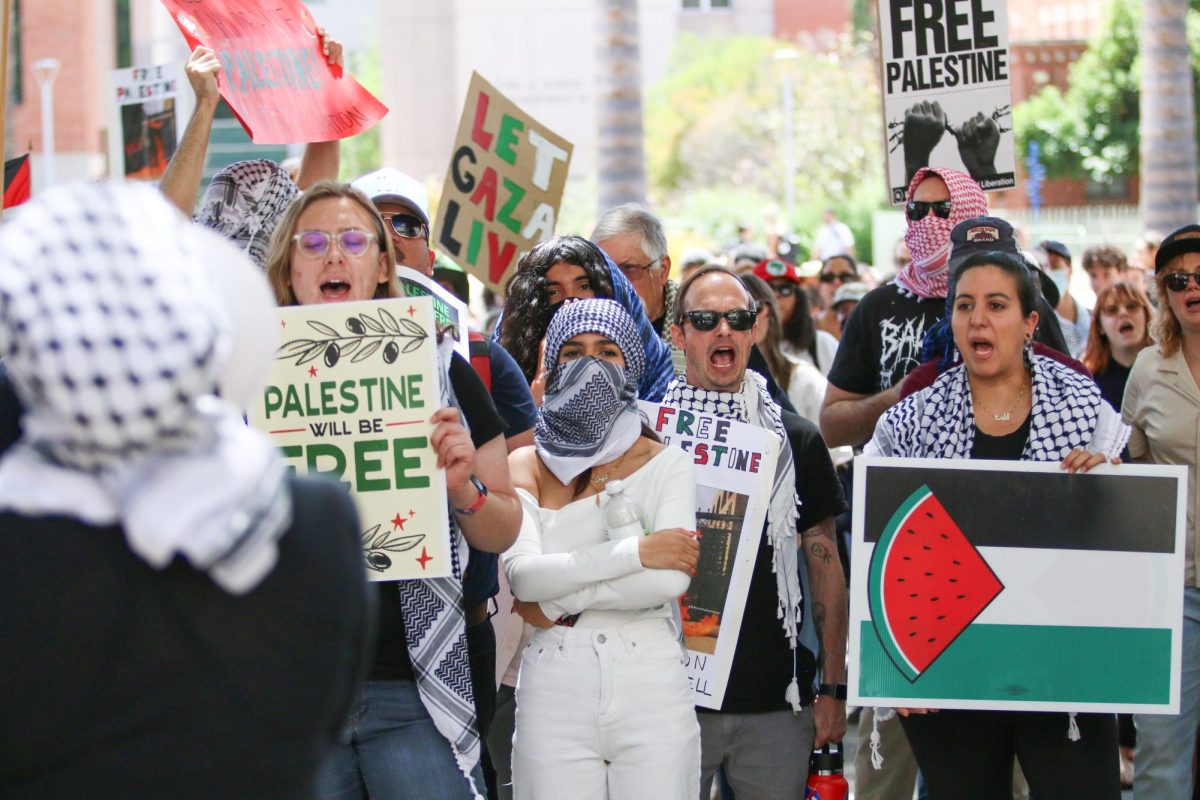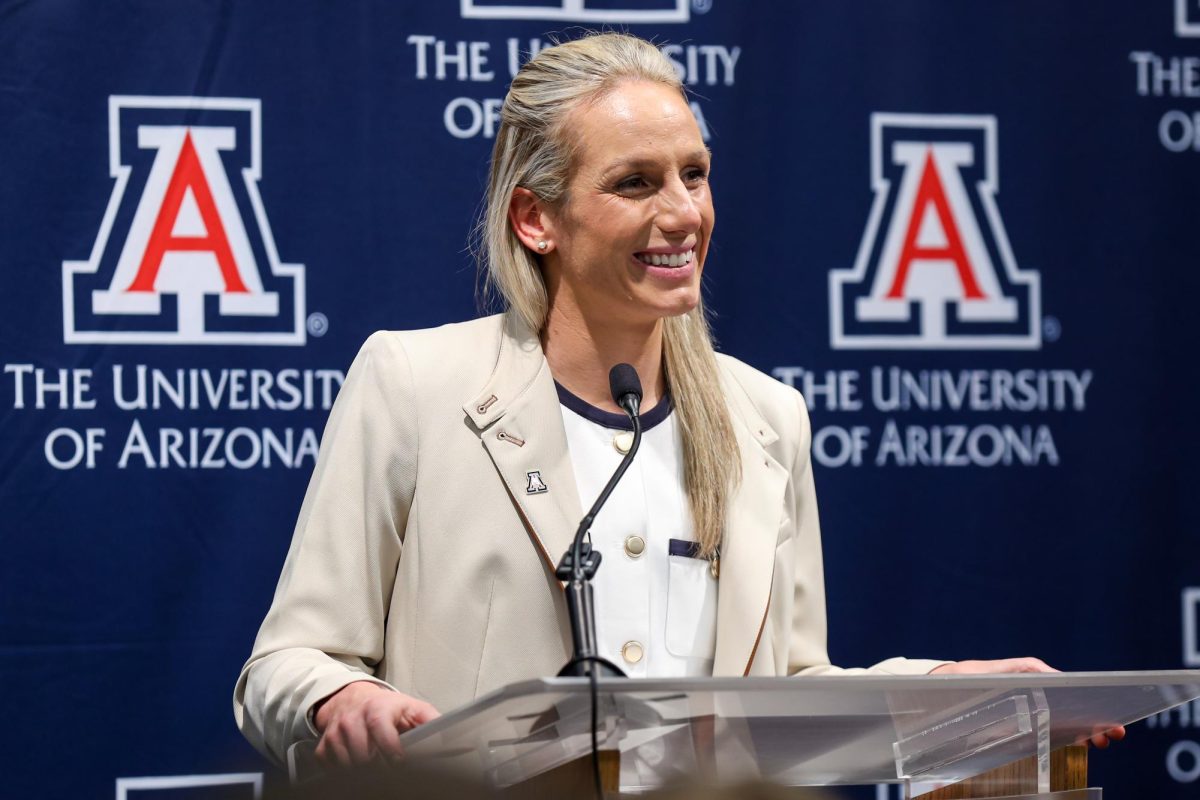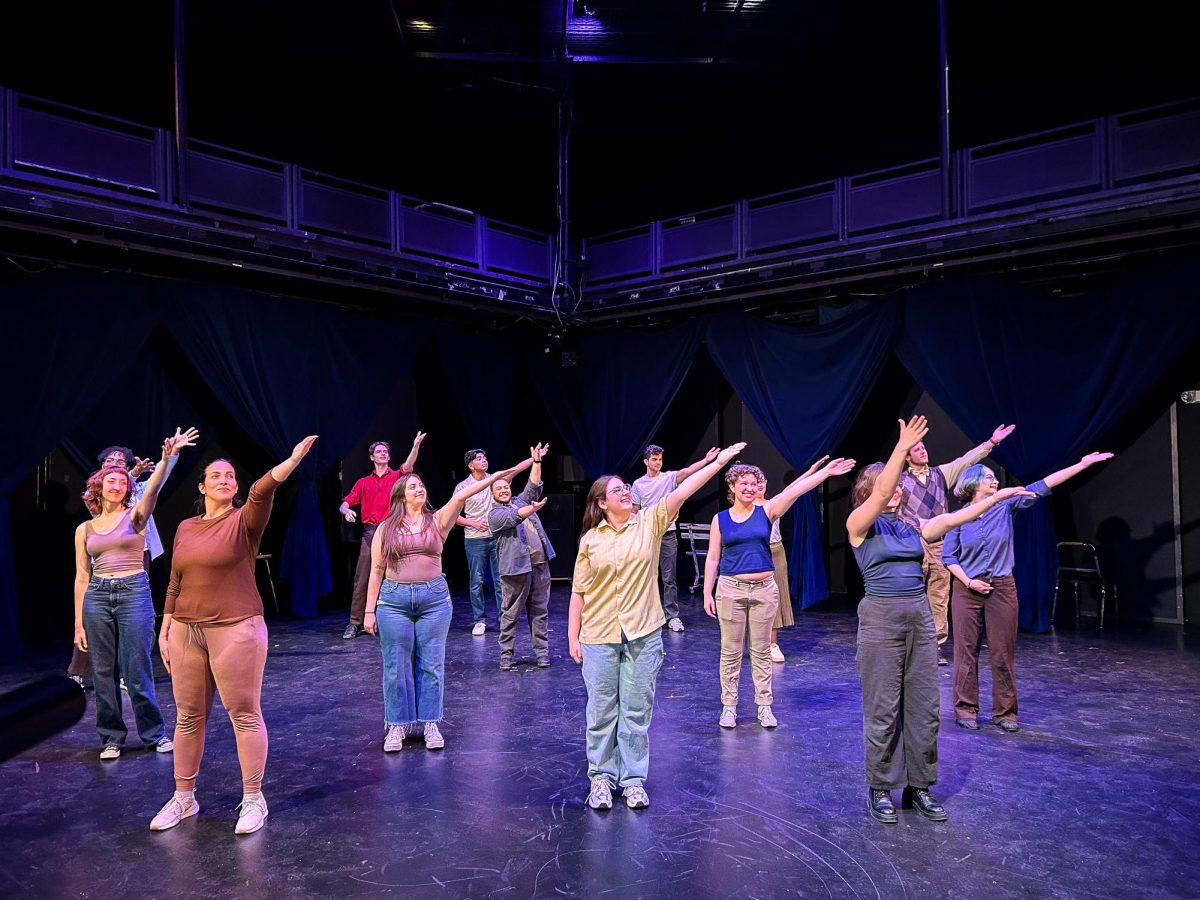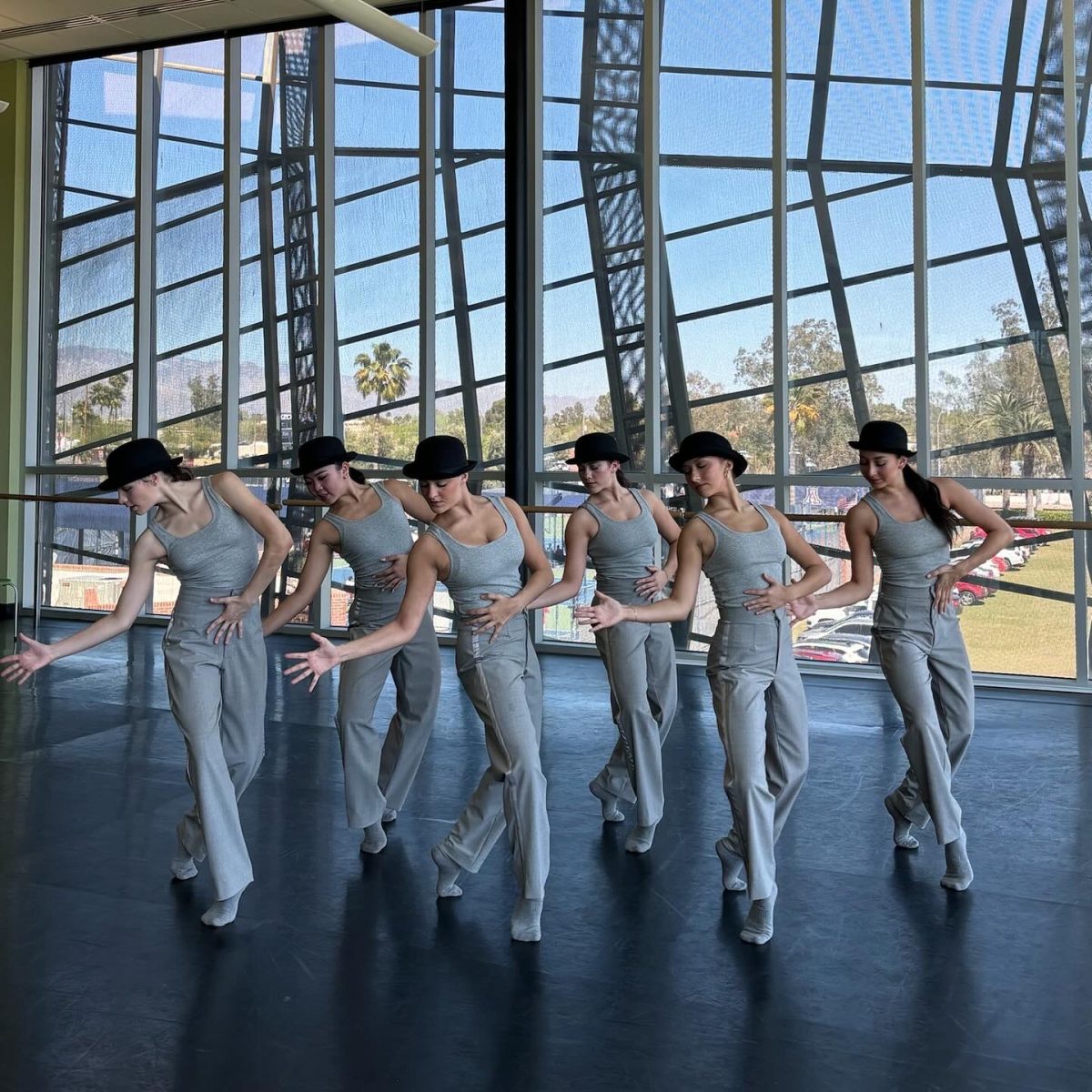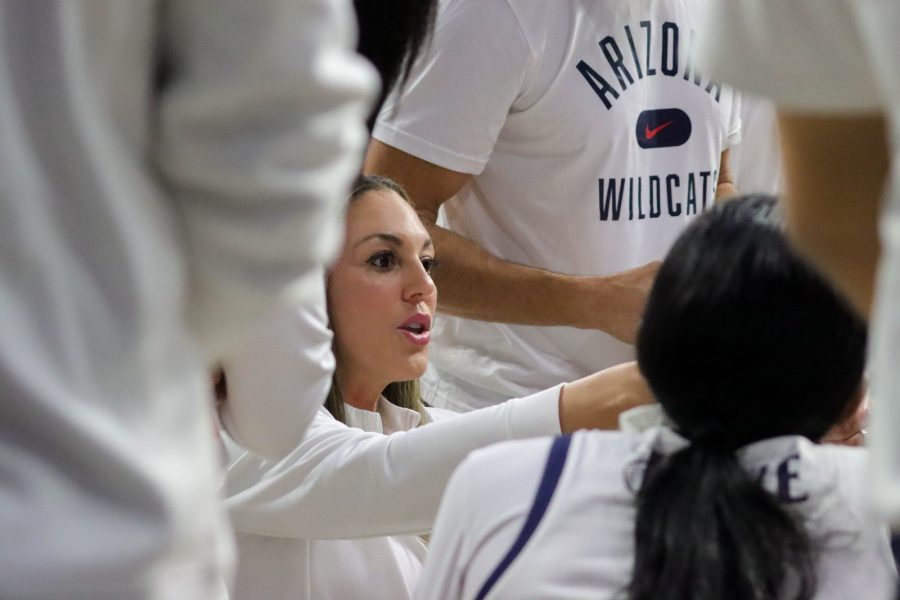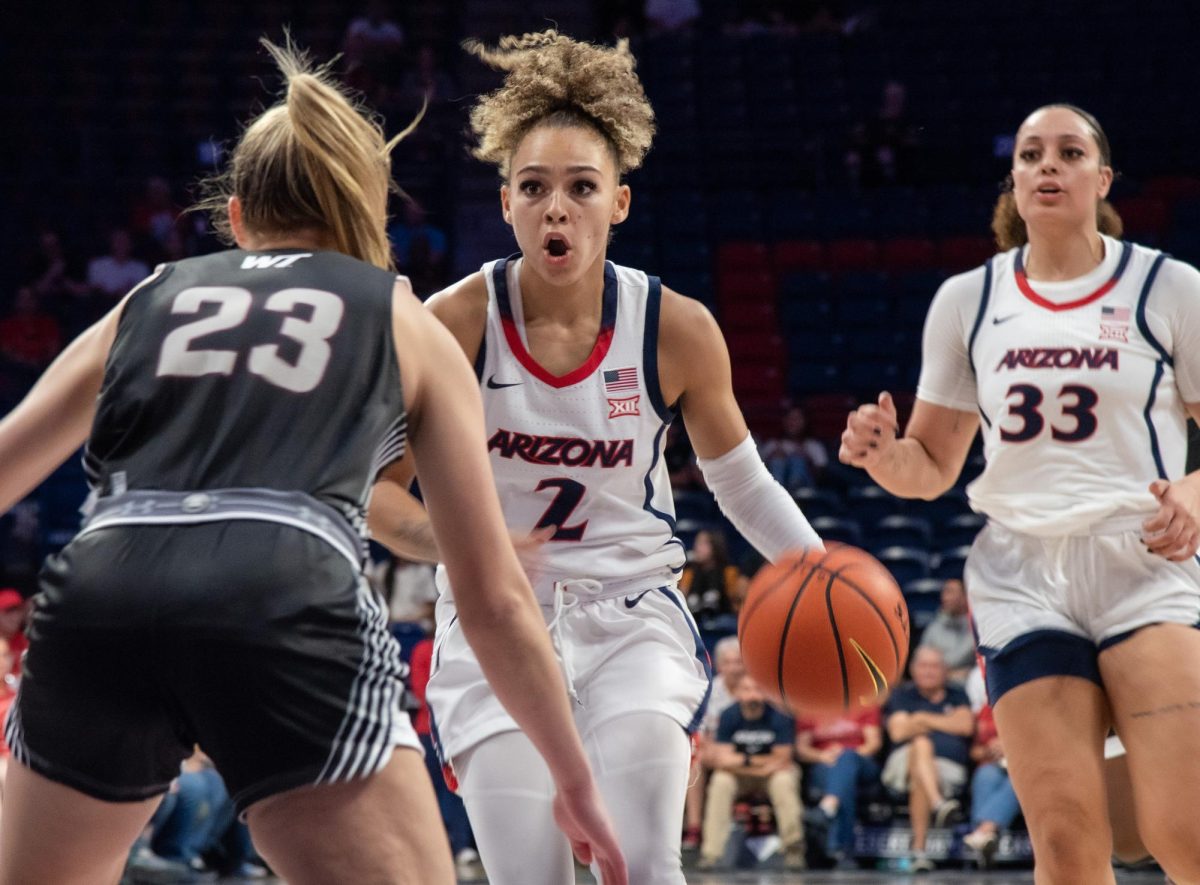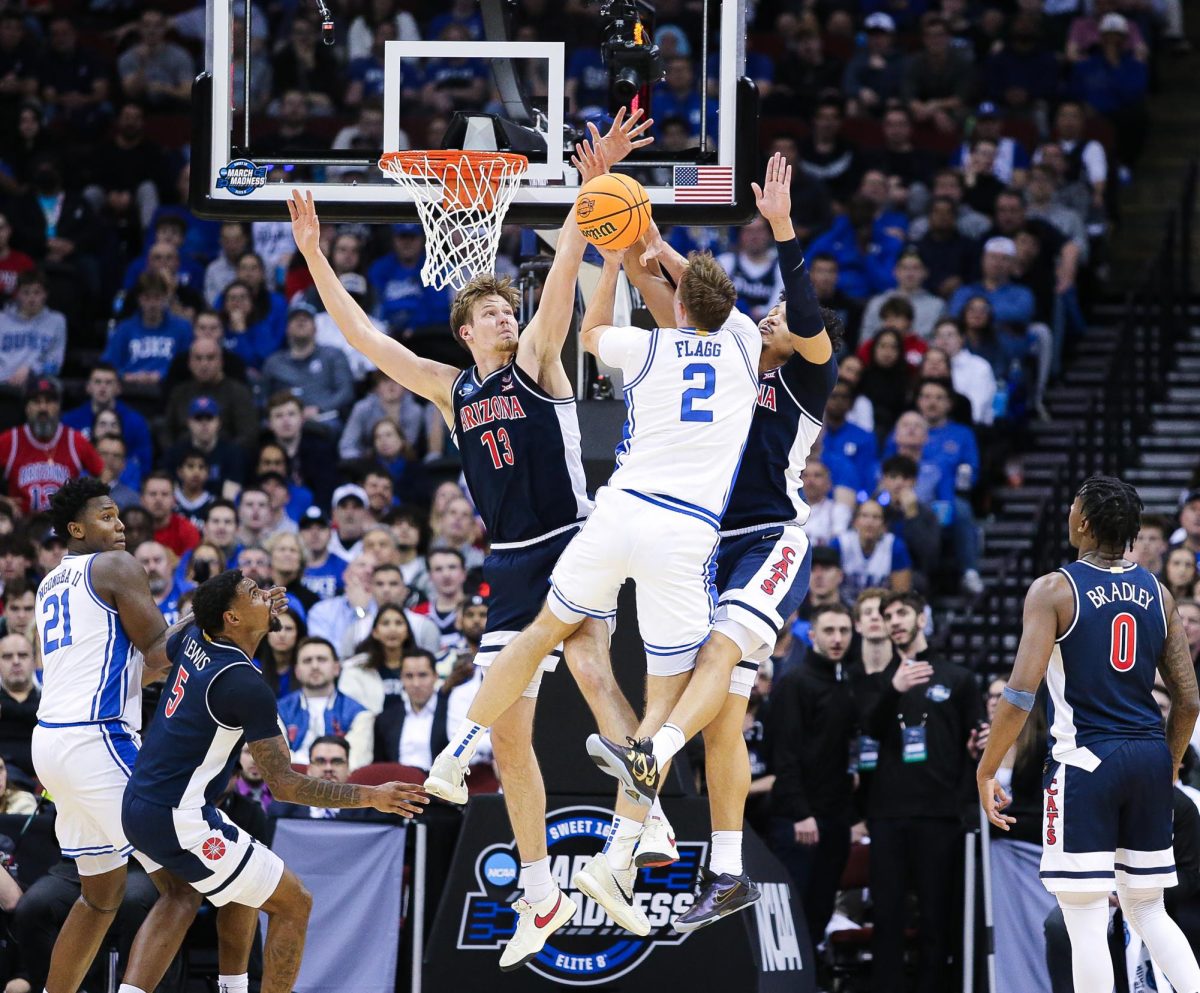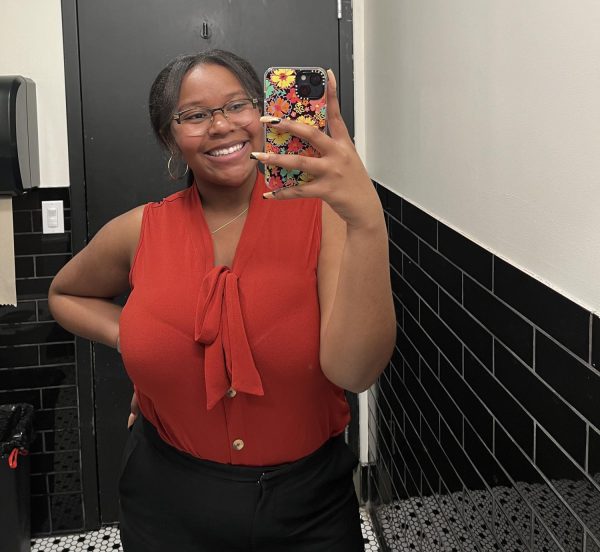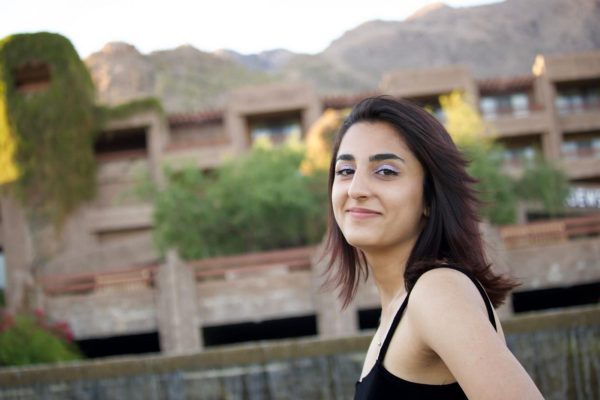On Oct. 7, 2023 when terrorist group Hamas attacked an Israeli music festival, no one could have anticipated the critical role college campuses would play in the discourse surrounding the conflict.
Between demonstrations, protests, rallies and eventual encampments, college students and university officials nationwide have had a unique time navigating this conflict on campus.
The University of Arizona has not been immune to the fallout surrounding the conflict.
The UA campus has seen vigils, various demonstrations and encampments as well.
Here is a timeline of the events surrounding the conflict and how it’s reached the UA campus:
October 2023
The immediate aftermath of Oct. 7 led to many demonstrations and outrage by both Jewish and Palestinian communities.
By Monday, Oct. 9, after Israel officially declared war on Hamas, there were already two demonstrations planned by different groups.
Supporters of Palestine rallied outside the Downtown Tucson Federal Building chanting support for the Palestinian people in Gaza.
That same day, hundreds of people gathered at the Tucson Jewish Community Center for a community solidarity vigil for Israel.
In the days following the attack, former UA President Dr. Robert C. Robbins released a statement, separating the university from student group Students for Justice in Palestine after the group had planned a rally on campus.
“We understand that a national student organization with a chapter at the University of Arizona called Students for Justice in Palestine, or SJP, is planning a demonstration on campus tomorrow. The national organization has made statements endorsing the actions of Hamas in Israel, which are, of course, antithetical to our university’s values,” the statement read.
The statement went on to read that as a public university free speech is obligated and supported, “even for ideas and opinions that most find objectionable or hateful”.
Robbins clarified in the statement that SJP, “is not speaking on behalf of our university […] but they have the constitutional right to hold their views and to express them in a safe environment”.
In response to the statement sent out to the university community, SJP decided to cancel their vigil. A statement posted on the SJP Instagram said that due to President Robbin’s “inflammatory” letter the group no longer felt safe holding their demonstration.
November
On Nov. 8, rows and rows of empty chairs filled the UA Mall, each meant to represent an Israeli hostage taken by Hamas.
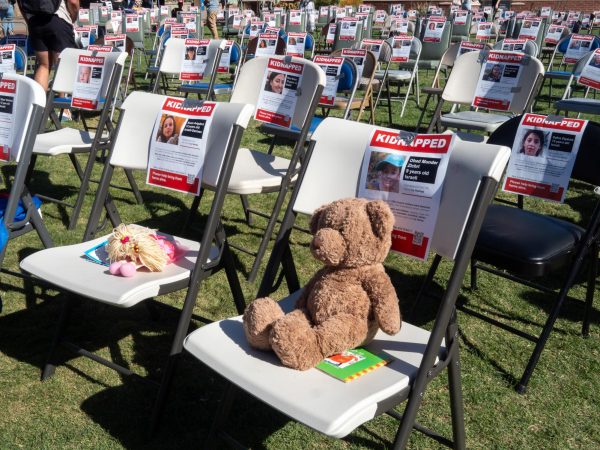
(Ben Tisdale)
The vigil was organized by Catpac Wildcats for Israel, a local chapter affiliated with the national American Israel Public Affairs Committee. The vigil also included participation from various Jewish organizations on campus like Hillel, Chabad and Mishelanu, as well as some non-Jewish organizations.
The following day, a march in support of Palestine took place on campus. The march drew out hundreds of supporters and students to participate.
Various student and community groups, including the Tucson branch of the Party for Socialism and Liberation, were involved in the planning of the walkout to demand “an end to the University of Arizona’s complicity in the occupation and genocide in Palestine,” according to the walkout flyer.
“This is not a fight against Palestinians, this is a fight against Hamas, to condemn them for what they’ve done,” said a Jewish student who requested anonymity at the rally.
Later in the month of November, UA professors Rebecca Lopez and Rebecca Zapien were put on administrative leave with pay after a video was shared of comments they made about the Israel-Hamas conflict during a class discussion.
A sit-in was staged at the College of Education to support the professors following their leave. Students involved in this sit-in expressed concern about how this decision related to their right to free speech on campus and debated if professors, along with themselves, can express how they feel without the risk of repercussions.
April
Following winter break and the majority of the spring semester, there was not much taking place around campus surrounding the conflict, but in April discussions and rallies began to pick up.
Students for Justice in Palestine at the University of Arizona hosted a protest on the UA Mall to show solidarity with Gaza and the Palestinian community on Thursday, April 25.
During the protest, students and staff advocated for a ceasefire in Palestine, cessation of all U.S. assistance to Israel, UA divestment from the weapons manufacturer RTX Corporation (formerly Raytheon Technologies Corporation) and an end of any partnerships between the UA and Israel.
At this point in the conflict encampments were beginning to be set up at universities across the nation but none had been set up during the April 25 protest.
By the end of the month, access to the UA Mall had been shut off completely by university officials following an encampment on the Mall that took place Monday, April 29.
The demonstration lasted on the Mall all day and as the sun began to set, the University of Arizona Police Department and campus security put out signs saying that “University policy states non-academic activity on the Mall must conclude by 10:30 p.m. Those that do not disperse will be part of an unlawful assembly and subject to arrest for trespassing.”
The protestors eventually dispersed and late Monday night, the section of the Mall where protestors had been, was blocked off with fences and signs that said “no trespassing.” The Mall remained blocked off until UA Commencement.
May
Another encampment was set up on the UA campus starting on April 30 at 3 p.m. The encampment was located at the Olive Grove near North Main Gate Square and was reinforced by sheet metal, wooden planks and tarps, creating a makeshift barricade.
By nightfall that day, chaos began to erupt as demonstrators clashed with police. The encampment lasted into the early hours of May 1 and by 2 a.m. officers moved in on the encampment from both sides and pushed demonstrators back onto Park Avenue.

Robbins released an email following the encampment stating the university would implement the following actions:
- “We will strictly enforce our campus use policies, including a prohibition on all non-permitted shade coverings, including canopies and tents.
- No events or large gatherings will be allowed on campus without a permit authorized in advance. Vice President and Chief Safety Officer Steve Patterson will review all permit requests.
- UAPD will take a zero-tolerance approach, acting swiftly and decisively to enforce our campus use policy, which can include issuing no warnings before taking action.”
On Friday, May 10, another encampment returned to the same spot. Just after midnight, law enforcement gathered, including the UAPD, Tucson SWAT and the Tucson Police Department, and fired tear gas canisters into crowds of demonstrators and bystanders on Park Avenue.
This encampment was cleared much faster and was met with much more force, as graduation celebrations were actively taking place at the same time as the encampment was being cleared.
September and October, 2024
Following summer break and the beginning of the 2024-25 academic year, sparse demonstrations have taken place in Tucson and around the UA campus, but nothing reaching the magnitude of the encampments seen in May.
At the intersection of Tyndall Avenue and University Boulevard, members of the Party for Socialism and Liberation organized a demonstration on Tuesday, Sept. 24, in response to the conflict between Lebanon and Israel, where Israel deployed missiles into Lebanon targeting the group Hezbollah.
On the anniversary of Oct. 7, the Hillel Homeland group at the UA, along with members of Olami UA set up a vigil to remember the tragedy that took place a year ago.
“This is a display memorial to highlight the events of Oct. 7 and the people we lost and remembering that there are still 101 hostages still in Gaza right now. And just making people aware of the atrocities that happened last year on Oct. 7,” senior Edan Levy said.
According to the group, they have no demands of the UA but want to just remind people of what took place.
“I’m not out here to discuss geopolitics and the war. We are here just to acknowledge what happened on Oct. 7, we are not here to talk about geopolitics. It’s a war, we acknowledge that it’s happening, but we are not out here to discuss that,” Levy said.
UA SJP also held a vigil on Friday, Oct. 4 to mark a year since the events of Oct. 7.
In a post made by UA SJP on Instagram, the vigil was to, “mark a year of ongoing genocide by the oppressive Israeli regime affecting victims from Gaza, the West Bank, broader occupied Palestine, and Lebanon.”
During the vigil, members held a Jewish prayer, Salat al Maghrib and a Christian prayer. These prayers were followed with speakers and a candlelight procession.
Follow the Daily Wildcat on Instagram and Twitter/X



